Phil Burtt, Grouse God, Shares His Know-How at Griffin & Howe’s Hudson Farm
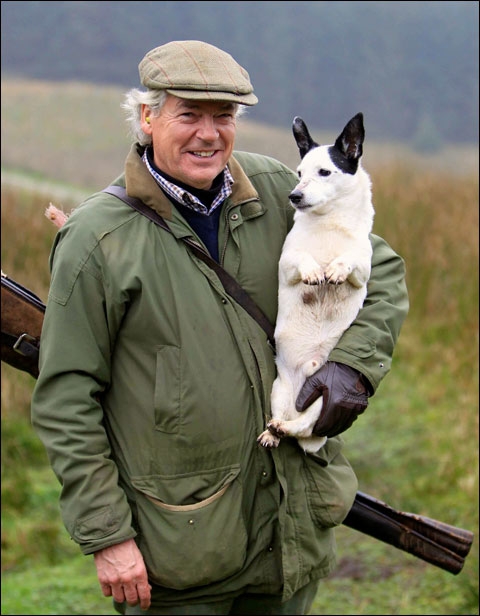
Griffin & Howe clients recently had the chance to hear shooting pointers from one of the world’s top grouse shots, and then to shoot simulated driven grouse under his expert eye. Phil Burtt, who manages the shooting at England’s Belvoir Castle, was in the US with his boss—Her Grace, the Duchess of Rutland—and presented a tutorial at Hudson Farm, Griffin & Howe’s shooting preserve in Andover, New Jersey, on March 19, 2014.
On the ground—sitting on a flint-stone wall or pecking through the heather—Britain’s red grouse appears to be little more than a feral chicken. On the wing, however, the grouse becomes a corsair of the air, the most aerobatic, most confounding and fastest of all gamebirds.
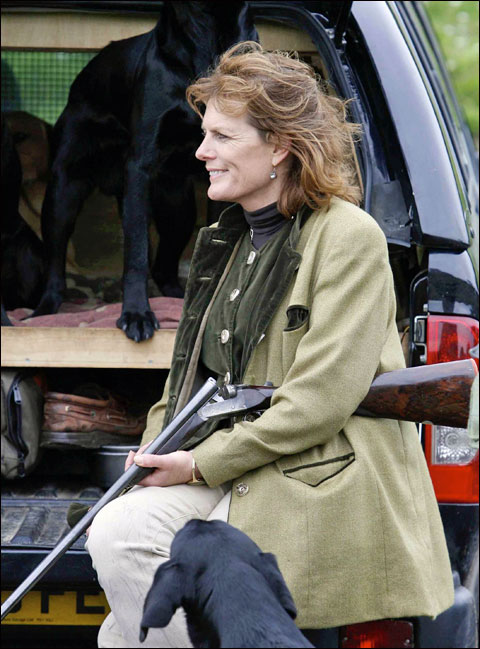 Her Grace, the 11th Duchess of Rutland. She was in the US to promote her latest book, Shooting: A Season of Discovery, as well as her home, Belvoir Castle, which has one of the oldest and best pheasant and partridge shoots in Britain.
Her Grace, the 11th Duchess of Rutland. She was in the US to promote her latest book, Shooting: A Season of Discovery, as well as her home, Belvoir Castle, which has one of the oldest and best pheasant and partridge shoots in Britain.It was this very question—what is the fastest gamebird?—that led to the creation of The Guinness Book of World Records in 1955. The answer wasn’t nailed down until 1989, when the 36th edition announced that “Britain’s fastest game bird is the Red Grouse (Lagopus l. scoticus) which, in still air, has recorded burst speeds up to 92.8-100.8 kph/58-63 mph over very short distances.” Since 10, 20 or even more knots of tailwind is hardly unusual on a grouse moor, particularly in October, it’s no great exaggeration to say that grouse can flash through a line of guns at close to “the ton”—a hundred miles per hour. And at speed, the birds seem able to twist away from a shot cloud moving at a 1,000 feet per second.
The challenge for novice grouse Guns, Burtt told his class, is always to be ready—and to shoot early. “You see those dots on the horizon,” he said, “and you think, ‘Oh, they’re far off.’ And before you know it, the birds are on top of you and then gone by. Concentrate!”
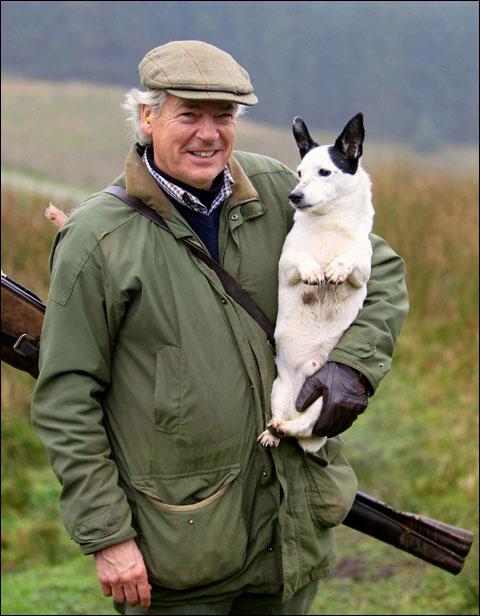 Phil Burtt, shoot captain at Belvoir Castle and one of the world’s top grouse shots, with his faithful retriever Spot.
Phil Burtt, shoot captain at Belvoir Castle and one of the world’s top grouse shots, with his faithful retriever Spot.Shoot when a bird seems out of range and let it fly into the pattern. Kill another while the pack is still in front . . . then snatch the fresh gun from your loader, whirl and shoot two more behind, going away. Easier said than done.
“Never try to track a grouse with your gun,” Mr. Burtt said. “You can’t do it; the birds change direction constantly. Instead, with the gun almost at your shoulder, pick your bird, move your feet to stay square to it, follow it with your eyes and body, then seat the gun and fire. It’s a reflex shot.”
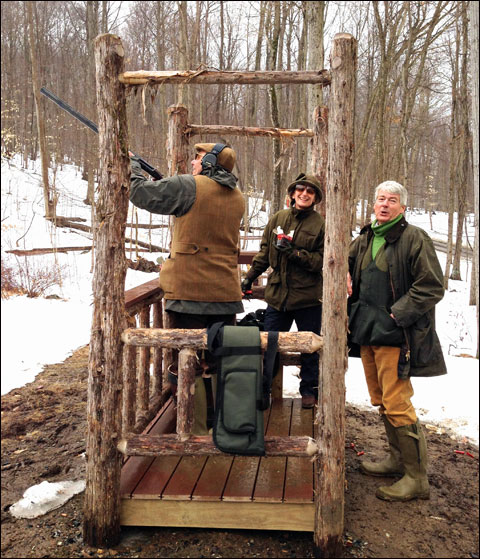 Veteran shooters Jeff and Kendra Kauffman taking simulated driven grouse lessons from Phil Burtt on the Hudson Farm sporting clays course. The Kauffmans, who took turns loading for each other, drove five hours each way to meet Phil Burtt.
Veteran shooters Jeff and Kendra Kauffman taking simulated driven grouse lessons from Phil Burtt on the Hudson Farm sporting clays course. The Kauffmans, who took turns loading for each other, drove five hours each way to meet Phil Burtt.Some grouse butts are “blind”—built into a hillside so that the birds come into view only moments away. In this case, instinctive shooting is all that’s possible. Or turn and take your shots going away.
Red grouse have eyesight and hearing to match their speed and evasiveness, Burtt said, so “don’t duck down in your butt and then pop up when the birds are near—they will see the movement and flare away. Wear dull clothing and stand still. Use your hat brim to shade your face. And be quiet!”
Driven grouse are not high birds; they follow the contour, sometimes just feet off the deck, and with their speed this creates another serious challenge for the Guns: safety.
 Belvoir Castle
Belvoir Castle“This is the most dangerous form of shooting,” Burtt said. “The butts are only 30 or 40 yards apart. Each butt has frames stuck in the ground at the sides, to keep the Guns from swinging through each other, but there are beaters out in front and flankers standing near the ends of the line. Behind you there will be dogs and pickers-up.
“When the beaters get close, the keeper will sound a horn to signal ‘No more shooting in front!’ At that point, turn in your butt and face away, watching over your shoulder for oncoming birds.
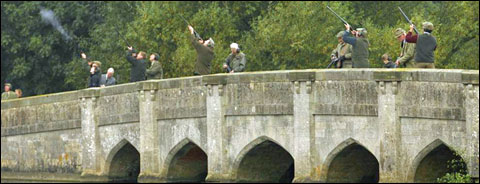 Shooting driven birds at Belvoir Castle.
Shooting driven birds at Belvoir Castle.“If you don’t hear the horn, or if there’s any doubt at all in your mind, put up your gun. Every year, people get shot on grouse moors. And you don’t want to be sent away for being unsafe—it’s a long, lonely drive home.”
In a hot corner, Burtt added, it’s easy to suffer “butt spin,” to become disoriented by turning back and forth as birds swirl all around. “It happens so easily. It’s bloody nerve-wracking, really, and even experienced grouse Guns sometimes think ‘Oh, God, I shouldn’t have taken that shot! But when it all comes right, there is no more satisfying, even addictive sport on earth.”
Silvio Calabi is an editor-at-large for Shooting Sportsman magazine and the author of many books and magazine articles about ‘the sporting life’—most recently a three-volume series called The Gun Book for Boys, for Girls and for Parents. He is also Belvoir Castle’s US representative. For shooting driven pheasant and partridge at Belvoir, contact him at calabi.silvio@gmail.com.
Useful resources
The Griffin & Howe web site
The Hudson Farm web site
The Belvoir Castle web site

Silvio Calabi is an editor-at-large for Shooting Sportsman magazine and the author of many books and magazine articles about ‘the sporting life’—most recently a three-volume series called The Gun Book for Boys, for Girls and for Parents. He is also Belvoir Castle’s US representative. For shooting driven pheasant and partridge at Belvoir, contact him at calabi.silvio@gmail.com.


Comments